Photography courtesy of Lowell Washburn, all rights reserved.
With its four-foot height, ear-piercing call, and six-foot wingspan; I think you’d be hard pressed to find a bird with more charisma than the crimson-capped sandhill crane. After a century of absence, sandhill cranes are becoming increasingly common across Iowa. Nesting cranes are currently documented in more than 40 Iowa counties with the greatest densities occurring on northern Iowa wetlands.
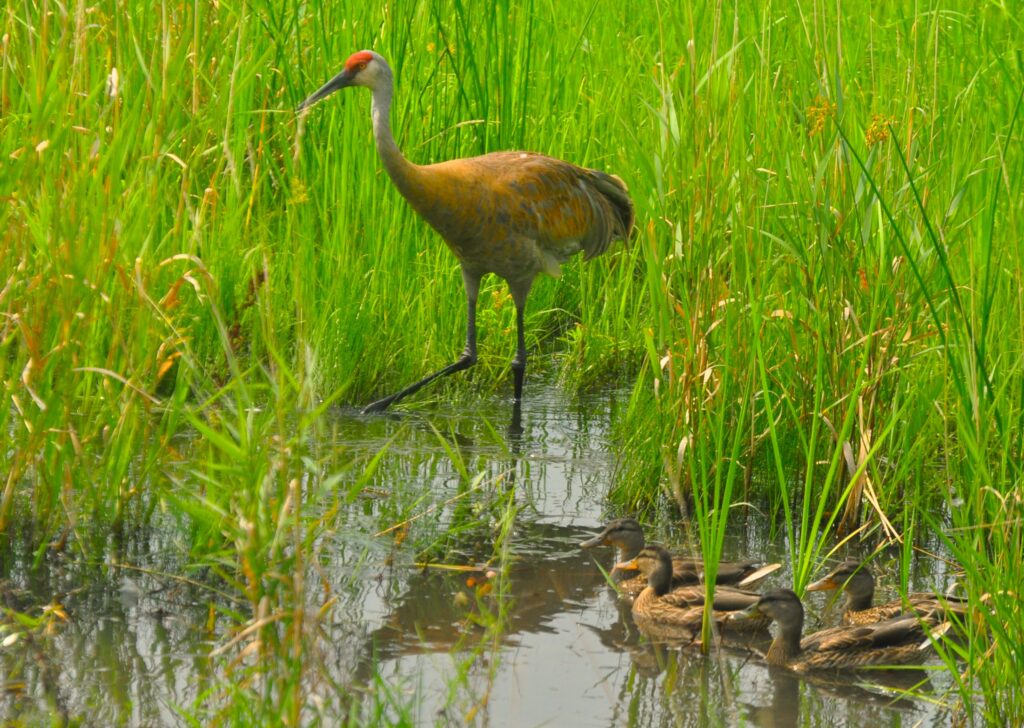
I’ve been spending the past few mornings attempting to photograph these magnificent birds. I used the word attempting because, despite their ongoing surge in numbers, getting close to cranes continues to present an uphill challenge. As wary as they are tall, most cranes take to the air as soon as they realize they’ve been spotted.
In Cerro Gordo County, where I live, there are currently five breeding pairs of cranes nesting in wetlands at or around Clear Lake. To obtain close up viewing opportunities, a person needs to be in exactly the right place at exactly the right time – a tough proposition when just two or three birds are utilizing the entire expanse of a large cattail marsh. Fortunately, some crane pairs are more predictable in their daily movements than others. One of those pairs has been spending the summer on wetlands at The Nature Conservancy’s Clausen’s Cove area located on Clear Lake’s south shore.
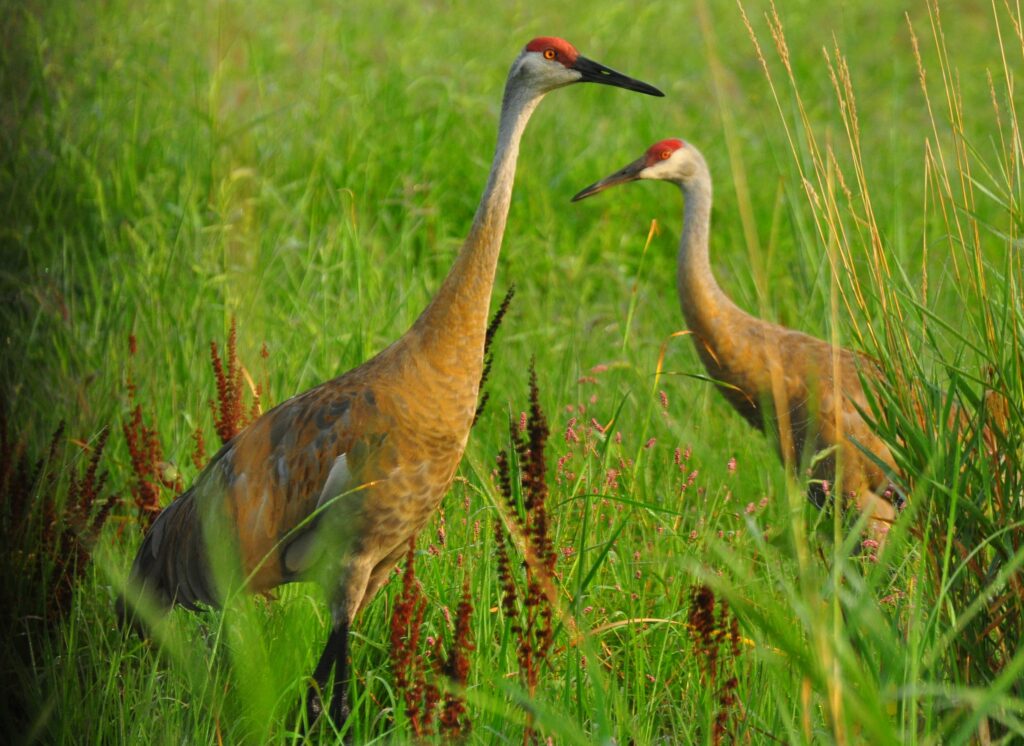
But even these birds have presented a challenge. Setting my blind at one of their favorite hangouts, the cranes were no shows on three of the six mornings I visited the site. On the mornings they did appear, I managed to get a few shots. All things considered, I decided that 50 percent success wasn’t all that bad. They were, after all, wild cranes.
Although I was getting some halfway decent photos on the good days, the results were less than what I had hoped for. I needed a way to get the birds closer to the camera. And then it struck me. Why not use a decoy the same as when luring ducks, geese, or wild turkeys?
Of course, crane decoys are not something you’re likely to find filling the shelves at the local sports shop. But after doing a bit of online searching, I did find a supplier offering some decent looking, full-bodied replicas. Four days later, the decoy arrived on my doorstep. Opening the box, I discovered that the bird was painted in the battleship gray coloration of a crane in winter. Since adult cranes are predominately brown during summer, I decided to do a makeover. With the aid of some brown auto primer, I quickly converted the decoy into a summer crane. Although the color was darker than the real birds, I hoped for the best.

Returning to the marsh, I set my blind where I had previously enjoyed limited success and placed the new decoy a few yards away. Sunrise had come and gone before I heard the beautiful trumpeting call of approaching cranes. The moment of truth had arrived.
The birds soon appeared, but my heart sank when I realized they were heading for an adjacent wetland. But as the cranes were passing, they spotted my single decoy and, upon making an abrupt turn, executed a spectacular decent. My spirit soared. The birds had taken the bait — hook, line, and sinker. Landing in a watery opening, the cranes literally seemed to glow in the soft, early morning light. The scene was breath taking.
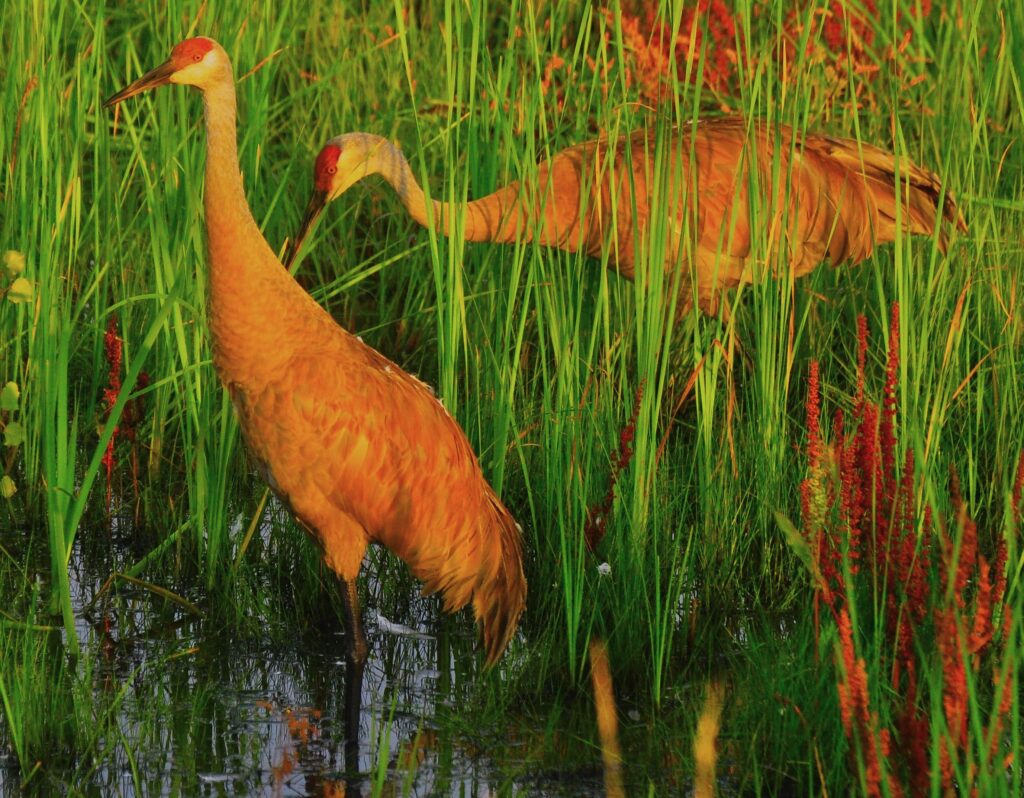
Once the pair touched down, there was none of the usual crane wariness, just an obvious curiosity over the unknown visitor. Although the male displayed no outright aggression toward the plastic newcomer, his stiff legged demeanor and glaring stare left little doubt that, if push came to shove, he intended to rule the roost. When the decoy remained docile, the cranes soon turned their attentions to rustling up some breakfast.
The shallow marsh was jammed with leopard frogs, providing a sumptuous banquet for hungry cranes. The foraging pair never separated by more than a few feet and catching frogs in three to four inches of water was a piece of cake. After hunting for several minutes, the cranes would repeatedly return to the decoy and hang out until the hunt resumed.
During one of these visits, I saw the male make a quick jab at something near his feet. Another frog, I assumed. But when pulled from the water, the hapless creature proved to be, not a frog, but rather a large meadow vole which the crane promptly swallowed in a single gulp. Not sure what that vole was doing out in the marsh but today would be its last swim.
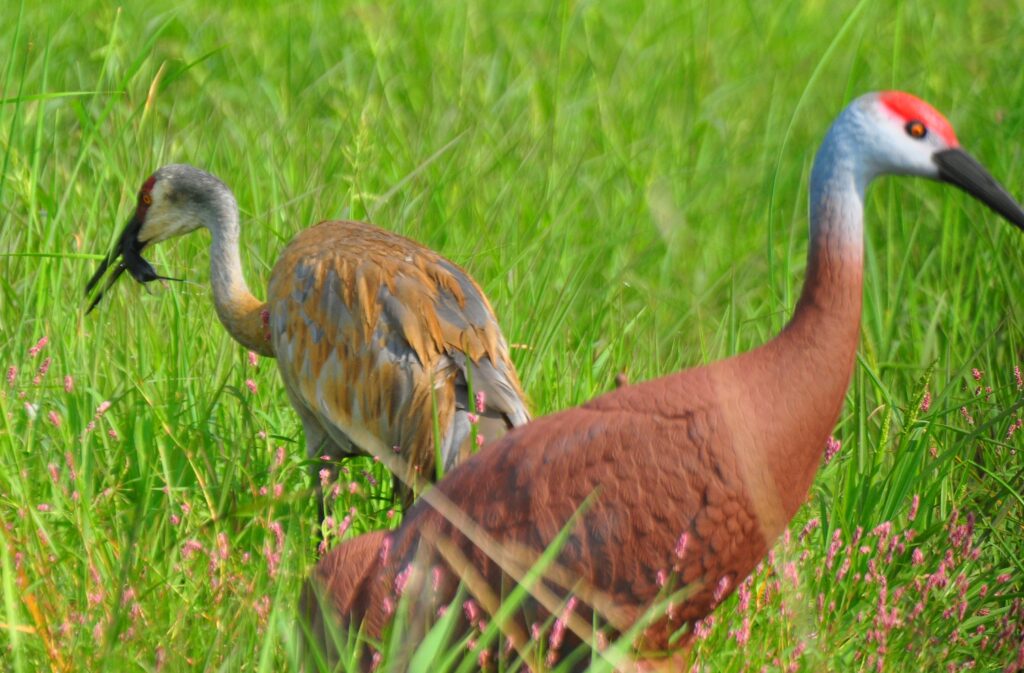
Cranes are reputed to have the loudest voices of any bird on the planet. And although the pair had made a noisy entrance, they had remained totally silent during the three hours since their arrival. By now, the birds had quit hunting and were lounging beside the decoy. At this range, the sound of their trumpeting would be incredible if they just had an incentive to crank up. And then I had this bright idea – or so I thought. Why not play some recorded ‘crane music’ through my cell phone? After thinking about it for several minutes, I decided to go for broke and give it a try. Fearful as to how the birds might react to my cheesy phone speakers, I reluctantly hit the Play button.
Upon hearing the recording, the drowsy cranes snapped to attention. With legs stiffened, feathers tightened, and necks stretched, the surprised birds appeared ready to blow at any moment. The tension finally broke when the male suddenly threw back his head and began a series of raucous vocalizations that nearly blew my hat off. The female quickly joined the chorus as the sandhills conducted a deafening display of why wild cranes are so deeply revered in cultures the world over.
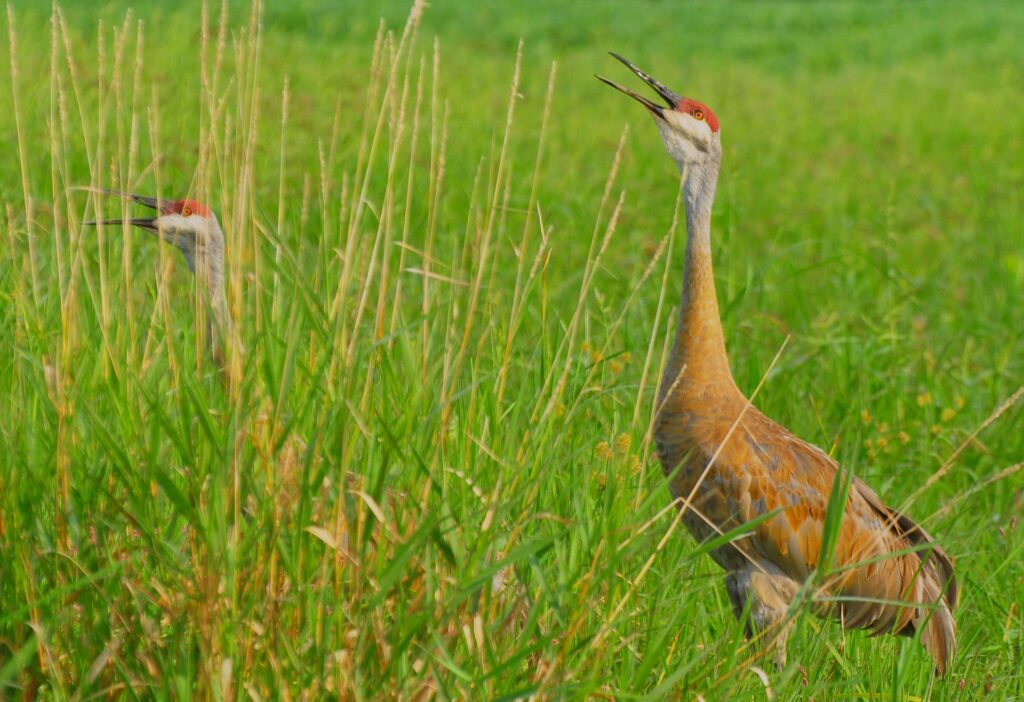
Once they got going, the cranes were reluctant to shut down. Taking brief interludes between choruses, the ancient symphony continued for what must have been five minutes or more. Switching to video on both phone and camera, I was able to capture and keep the blood stirring sound of wild cranes in their natural habitat.
At 11:38 am, the cranes decided to move to an adjacent wetland. Despite the continuing presence of mallards, rails, and other birdlife, the marsh seemed eerily vacant once the cranes had departed. As I began packing up my photo gear, I realized that today’s outdoor adventure would be remembered as one of my all-time favorites.

 Tom Cope
Tom Cope Sue Wilkinson
Sue Wilkinson Susan Judkins Josten
Susan Judkins Josten Rudi Roeslein
Rudi Roeslein Elyssa McFarland
Elyssa McFarland Mark Langgin
Mark Langgin Adam Janke
Adam Janke Joe Henry
Joe Henry Kristin Ashenbrenner
Kristin Ashenbrenner Joe Wilkinson
Joe Wilkinson Dr. Tammy Mildenstein
Dr. Tammy Mildenstein Sean McMahon
Sean McMahon